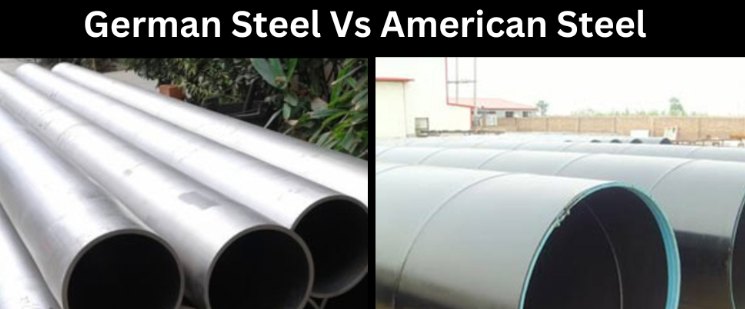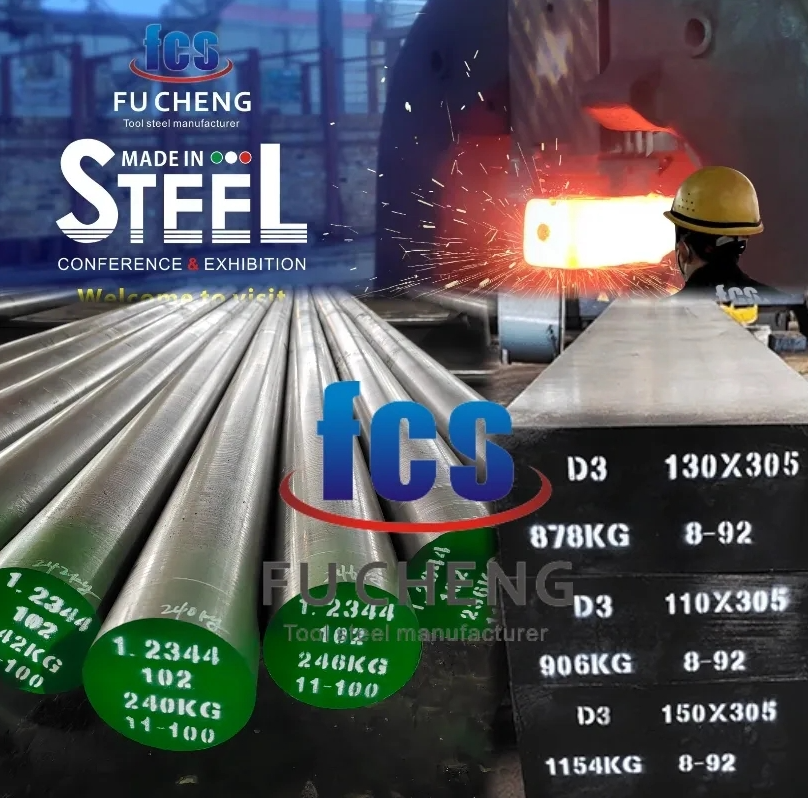Overview of German vs. American Tool Steel Grades
I’ve worked with metal my whole life. German and American tool steels feel like two different kinds of music to me. Each has its own special traits.
When I touch German steel, I feel the history of Black Forest craft in the metal. American steels have a bold, hands-on feel from years of factory growth.In my shop, I value both types. Each makes its own sound when I hammer it. Each reacts differently when heated.To me, these different steel types aren’t just tech specs. They tell cultural stories through their carbon and alloy makeup.
Key Differences in Technical Standards
German Standards (DIN System): Germans group their tool steels by chemical makeup and intended use. X50CrMoV15 is a good example. It’s made for strength while balancing rust protection and toughness.
American Standards (AISI/SAE System): Americans use number codes to sort steels by carbon and alloy levels. AISI 440C is well-known for its high carbon, which helps it keep a sharp edge.
Performance Characteristics
| Performance Characteristics | German Steels | American Steels |
|---|---|---|
| Carbon Content | German steels like X50CrMoV15 have a medium carbon content (0.5%). They focus on longer service life and ease of use. | American steels like 440C can have up to 1.2% carbon. They are much harder but less tough. |
| Hardness | German steels can reach 58 ±2 HRC. This makes them suitable for tough jobs while still being easy to sharpen. | American steels, such as 440C, can reach 60 HRC. They hold an edge better for heavy work. |
| Corrosion Resistance | German grades (with 15%-17% chromium) perform well in rusty environments. Adding molybdenum enhances their rust-proof properties. | American steels, like 154CM and S30V, also resist rust with a chromium content of 14%-18%. |
| Wear Resistance | German steels combine chromium and vanadium to withstand regular and heavy use. | American grades perform well in tough settings and last longer in factory and heavy-duty jobs. |
| Common Comparisons in Tool Steel – High-Speed Steel (HSS) | German: HS6-5-2 (DIN 1.3343) has decent red-hardness and is suitable for machining. | American: M2 and M35 grades have better tempering properties and better scratch resistance. |
| Common Comparisons in Tool Steel – Cold Work Tool Steels | German: X155CrVMo12 (DIN 1.2379) has wear resistance comparable to American AISI D2. Both are excellent for die-cutting. |
By knowing these differences, I can pick the right tool steel for my needs—whether I want precision, strength, or low upkeep costs.
Key Differences Between German and American Tool Steel
1. Composition and Hardness
German Tool Steels: Grades like X50CrMoV15 have medium carbon content (~0.5%) with chromium and molybdenum added. I find this mix gives good balance between hardness (58 ±2 HRC on the Rockwell Scale) and toughness.
American Tool Steels: Types such as 440C or D2 contain more carbon (up to 1.2%) and include vanadium. These steels reach higher hardness levels (up to 60 HRC). They keep their edge better but can chip under stress.
2. Manufacturing Techniques
German Steels: Made using cold-rolling for better consistency and strength. They use heat treatments like tempering X50CrMoV15 to balance hardness with rust protection.
American Steels: Made with modern methods including powder metallurgy. Examples are CPM-S30V and M2 tool steels. These resist wear well and perform strongly in tough industrial uses.
3. Wear Resistance
German Tool Steels: They resist wear well thanks to chromium and vanadium. I recommend these for kitchen tools that see daily use.
American Tool Steels: Newer grades like CPM-S35VN have special metal mixes that resist wear and hold an edge longer. These work best for heavy-duty tools and industrial jobs.
4. Corrosion Resistance
German Steels: With about 15% chromium (like in X50CrMoV15), they fight rust and staining well. These are my top pick for wet environments.
American Steels: Materials like 154CM and S30V also contain high chromium (14-18%). Their rust protection focuses on staying strong during tough, industrial use.
5. Cost and Applications
German Steels: Cost more due to careful production. They make great surgical tools and kitchen knives where precision matters.
American Steels: More budget-friendly and ideal for big industrial uses. Their strength and edge-holding make them perfect for cutting blades and high-performance tools.
6. International Grade Equivalents
German tool steels follow DIN standards, while American steels use AISI standards. You can match them across systems.
Examples include:
DIN 1.2379 (Germany) ≈ AISI D2 (USA)
DIN 1.3343 ≈ AISI M2.
Performance in Different Steel Types
German Tool Steels: Balance of Corrosion Resistance and Toughness
German tool steels like X50CrMoV15 and 1.4116 mix toughness and corrosion resistance well. This comes from their medium carbon content (~0.5%) and high chromium levels (~15%).
After heat treatment, 1.4116 reaches a hardness of 500-540 HV. This makes it tough and rust-resistant.
These steels serve many industries needing both strength and resistance to harsh environments. I’ve seen them used in kitchen knives and surgical tools.
American Tool Steels: Superior Edge Retention and Wear Resistance
American tool steels like 440C, D2, A2, and O1 excel in hardness and edge retention. 440C contains up to 1.2% carbon, which boosts its hardness and wear resistance.
They resist corrosion (with 14%-18% chromium). But I find they don’t match German steels in this area due to different alloys.
D2 steel stands out with its wear resistance and compressive strength. Its high chromium (12%) and carbon (1.5%) make it perfect for cutting knives, dies, and molds.
Hot-Work vs. Cold-Work Tool Steels
Hot-Work Tool Steels: Types like H13 and 1.2344 offer toughness and thermal resistance. I recommend them for die-casting, hot forging, and extrusion.
Cold-Work Tool Steels: D2 and O1 provide excellent wear resistance and hardness. They work best for stamping tools, coin dies, and shears. D2 maintains hardness up to ~62 HRC after heat treatment and hardens deeply.
Shock-Resisting Tool Steels (S-Series)
S-grade steels like S7 are built for high-impact uses. They have low carbon content, which reduces abrasion resistance but improves shock-absorbing ability.
I see them used in jackhammer parts, chisels, and pneumatic tools.
Performance Comparisons
German Tool Steels: Excel in high corrosion resistance and durability. Based on my experience, they’re ideal for kitchen knives (X50CrMoV15) and surgical instruments (1.4116).
American Tool Steels: Stand out for high edge retention and wear resistance. They’re essential for tough jobs like D2 punches and dies.
Examples of Applications
| Region | Steel Grade | Application |
|---|---|---|
| German | 1.4116 | Suitable for handling moist environments in kitchen tools. |
| German | X50CrMoV15 | Applied in surgical devices due to its corrosion resistance. |
| American | D2 | Ideal for blanking and forming dies. |
| American | A2 | Performs excellently in stamping and embossing molds. |
| American | 440C | Commonly used in heavy-duty knives. |
Cross-Reference of Standards
German DIN vs American AISI Steel Grades
100Cr6 (DIN) matches AISI 52100. Both have great wear resistance and are used in bearing production.
X155CrVMo12-1 (DIN 1.2379) equals AISI D2. This is a high-carbon, high-chromium steel. It works well for cold work tools like die cutting and shearing.
36CrNiMo4 (DIN 1.6511) equals AISI 4340. This is a strong alloy steel used in aerospace for its toughness under stress.
Specific Comparisons
C45 (DIN 1.1191) equals AISI 1045. It’s a medium-carbon steel used for engineering parts like shafts and gears.
X12CrNi18-8 (DIN 1.4310) equals AISI 301. This stainless steel is used in structural parts and cars.
Spring Steel Compatibility
45SiCrV6 (DIN 1.2249) is a strong spring steel with no direct American match. It’s great for tough, high-performance spring parts.
High-Speed Steel (HSS)
T-1 (AISI) and HS6-5-2C (DIN 1.3343) are the same. I find they’re perfect for making cutting tools that need to resist wear and cut well.
Equivalent Grades in Tabular Comparison
| Germany (DIN) | USA (AISI/SAE) | Common Applications |
|———————-|—————-|——————————-|
| 1.7225 (42CrMo4) | AISI 4140 | Ideal for gears, shafts |
| 1.2343 (X37CrMoV5-1)| AISI H11 | Used in hot-work tools, dies |
| 1.2714 | AISI L6 | Heavy-duty tool production |
| 1.2080 (X210Cr12) | AISI D3 | Best for wear-resistant cuts |
Tool Steel Equivalents
This comparison helps you select steel grades by showing equal materials across different standards. These materials meet performance needs in car making, aerospace, and tool making.
Cr12Mo1V1 (DIN) equals AISI D2. It’s good for cold work tools like punches and stamping dies.
X40CrMoV5 (DIN 1.2344) equals AISI H13. I recommend it for pressure die casting tools because it has high toughness and stays stable under heat.
Practical Considerations
When I compare German tool steel to American steel, I see clear differences in how they perform. Here’s my breakdown of what matters when choosing between them.
Performance Trade-offs
German steels like X50CrMoV15 have decent hardness (56–58 HRC) with good durability and rust resistance. I find these perfect for kitchen knives and tools that need easy upkeep.
American steels such as 440C or CPM-S35VN reach higher hardness (up to 60+ HRC) with better edge retention for tough jobs. But watch out—they can chip under stress.
Wear Resistance
German tool steels mix chromium and vanadium to resist wear. These work well in food processing where tools see constant use in wet settings.
American grades like A2 or D2 use more carbon and chromium for strong wear resistance. I’ve seen these used in cutting dies and stamping tools.
Heat Treatment and Properties
German steels go through specific heating and cooling steps to balance toughness, rust protection, and edge keeping.
American steels often use cold treatments to keep their shape and resist wear in tough jobs.
Corrosion Resistance
German grades like X50CrMoV15 or 1.4028 resist rust thanks to high chromium (13–15%). These excel in kitchens and food plants where moisture is present.
American tool steels often give up some rust protection for other benefits. Newer alloys like CPM-S35VN add elements to improve both strength and rust resistance.
Toughness vs. Breaking
German steels aim formoderate to high toughness, so they won’t chip as easily. They’re somewhat softer as a result.
American grades focus on hardness and edge keeping, but they can break when faced with uneven force or impacts.
Ease of Sharpening
German steels sharpen easily with basic tools due to their moderate hardness. This makes them user-friendly for regular use.
American steels like D2 or S7 need special sharpening gear because they’re so hard.
Industrial Uses
German tool steel fits well where moderate hardness and rust protection matter most, like food cutting tools.
American grades shine in tough industrial work, such as heavy machinery, mining tools, and cutting tools, because of their wear resistance and special heat treatments.
By knowing these differences, I can pick the right steel for my needs, whether I need something for everyday use, industrial work, or special tasks.
summary
In my years working with metals, I’ve found there’s no “best” steel—just the right one for your needs. German steel mixes good balance with rich history, while American steel keeps its edge longer and stands up to heavy use. I’ve learned that knowing these steel types helps me pick better metals for each job. If you’re making kitchen knives or building machine parts, there’s a steel that fits your project perfectly. I still get excited seeing how each metal performs in different tasks. These performance differences shape my work daily.





